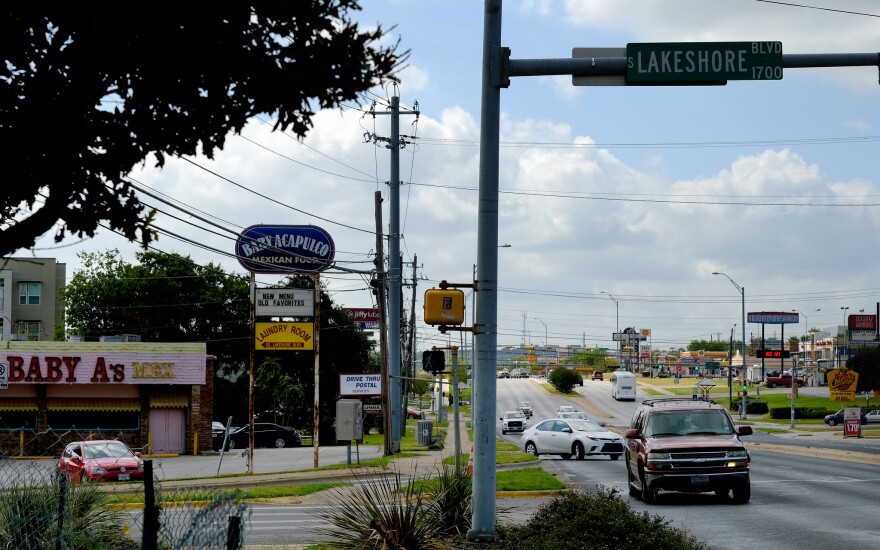One hundred and two people died on Austin’s roads last year – the most in the city’s recorded history. Now, Austin voters are now being asked to okay a $720 million bond to fund road improvements – bike lanes, sidewalks and urban trails.
The big selling point, at least from Mayor Steve Adler and the pro-bond PAC, Move Austin Forward, has been reducing congestion.
But given last year's number of traffic deaths, local safety advocates are wondering what’s to ensure road changes don’t equate to more death – or even a continued rate of fatalities.
Recently Vision Zero ATX, a local road safety group, declared a neutral stance on the bond.
“The corridor plans, in theory, could be a huge boon to traffic safety,” said Nic Moe, chair of Vision Zero ATX. By KUT’s own count, at least 13 of last year’s 94 fatal crashes occurred on one of the corridor plans to be funded by the bond money.
“A lot of these corridors are along stretches of roads that we’re all familiar with such as, Lamar and East Riverside and Slaughter Lane, that are particularly dangerous for all road users and they see a lot of serious crashes.”
But advocates wonder how the $720 million bond will translate into on-the-ground safety for everyone on Austin's roads.
There are some definites
Still, those concerned about safety can count on at least some money.
“There’s a $15 million allocation specifically for fatality-reduction strategies,” said Move Austin Forward Campaign Manager Jim Wick. “What that really is dealing with our most dangerous intersections.”
Wick is right. While it’s a small portion of the total bond amount, council set aside $15 million to fund changes at 28 intersections deemed by the city to be some of Austin’s most dangerous, including Airport Boulevard at Martin Luther King Boulevard and North I-35 at Cesar Chavez Street.
And then there’s the money that could ensure safer conditions for pedestrians: $37.5 million for the city’s Sidewalk Master Plan, to be distributed based on need; plus $27.5 million for Safe Routes to School, to be distributed evenly among Austin City Council districts.
"That will improve walking safety through new sidewalks and safer crosses," said Tom Wald, a member of the city's Pedestrian Advisory Council.
Plus, the city recently adopted some guiding principles when it comes to safety. In 2014, city council approved a Complete Streets Policy, which priorities safety among pedestrian and bicycle infrastructure in transportation projects. And, this year, the city adopted a Vision Zero Action Plan. The road safety plan gets its name from the goal of achieving zero traffic deaths on the city’s roads.
The real work comes later
Moe said, at times, it can appear that reducing congestion is antithetical to increased road safety.
“The problem is that there are a lot of other items, such as funding for corridor plans that primarily seek to increase car throughput – which is great, if your goal is to increase more cars getting through,” said Moe. “But, it’s not necessarily great if you’re trying to make safe environments for people trying to get around at all, in any way.”
But Wick argued that reduced congestion often means heightened safety. (The U.S. Department of Transportation, for one, appears to agree). Take raised medians, for example.
Several of the corridor plans, including the plans for Airport and South Lamar boulevards, recommend building raised medians between north and south traffic lanes – often in place of center turning lanes.

“It primarily helps congestion by reducing what are called conflict points,” said Wick. “The more conflict points you have on a roadway, the more likely it is for there to be a crash.”
And with crashes come traffic delays.
But, because the $482 million set aside for the city’s corridor plans will not fund these improvements in full, Moe said the feeling he has and the one he gets from fellow safety advocates is that the real work comes when, or if, the bond passes.
“If this bond passes, there are still a lot of questions that need to be answered and a lot of political fights that will still need to happen to determine what that actually means and where this money will be going."
This story was produced as part of KUT's reporting partnership with the Austin Monitor.






